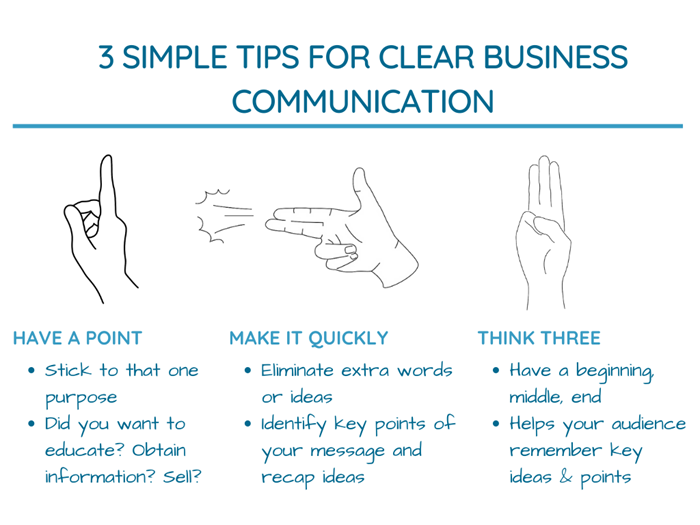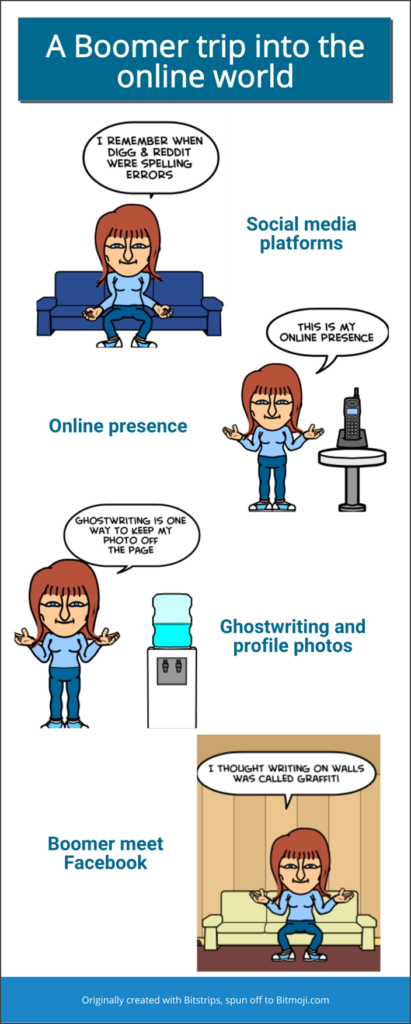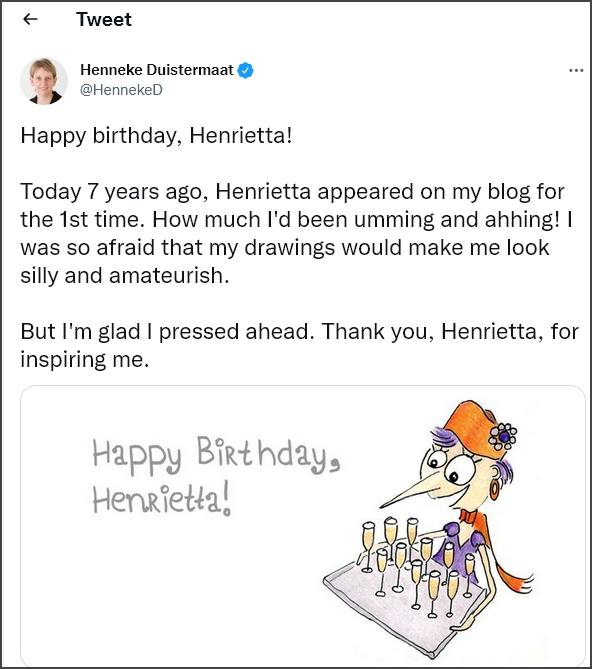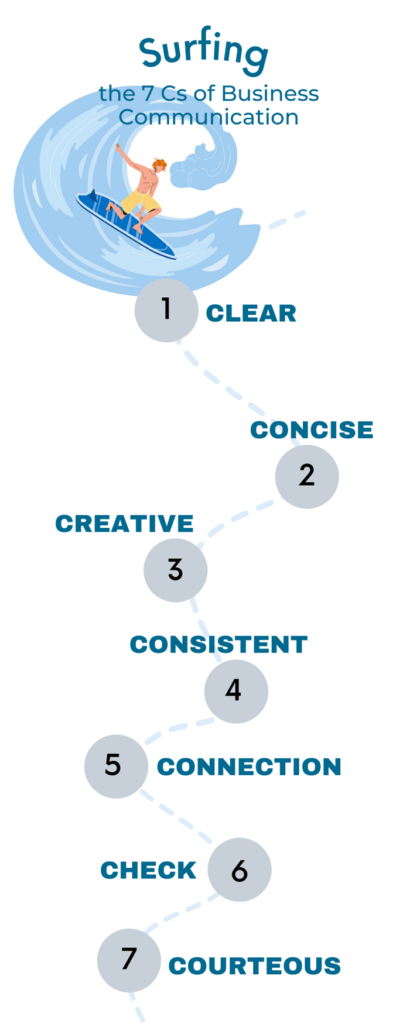 Your customers are flooded with business communication.
Your customers are flooded with business communication.
How is your message heard above the roar of wave after wave of words?
- Learn how to surf the 7 Cs of business communication.
- Customers will cheer your success.
- See how you can float the 7 Cs in your business communication.
In case you haven’t notice, this series is ripe with bad puns.
C#1 – Keep it Clear
How many times have you watched a commercial that left you scratching your head as to what they were selling? Look at all those raised hands.
- Clever doesn’t matter if the buying public doesn’t know what you’re selling.
- A logo at the end does not make your message any clearer.
- And if your message is not clear, your prospect is not buying anything.
How can customers buy your product or service if they don’t know what that is?
But your message is more than a product or service.
- It’s the email you send
- The tweet you share
- And the business site you built
Is your message clear on each form of communication?
Clear Tip #1 – Know your purpose.
Before you get to the writing stage, you need to do a bit of homework. I heard that groan. Okay, it’s more like getting a clear vision of your purpose. Is that better?
Concise communication keeps your audience focused.
- But what do you want them focused on?
- Do you know what you hope to achieve?
- What customer response would you consider a win?
Check out the following scenario.
While we always hope to make the sale, we know that may not happen on the first try. So, you have varying levels of success.
Using the above scenario, create three value points: 1) your dream value, 2) rock bottom value, and 3) somewhere in the still-smiling middle.
1). What is a dream reaction from your customer?
- You make the sale – yay!
- Proceed to happy dance.
2). Rock bottom value – you generate a response.
- At a minimum, your audience reads it.
- Better – they share, comment, or get in touch.
3). Still smiling response – they show real interest.
- The potential customer asks questions.
- He or she signs up for a trial or makes a smaller purchase (to start).
Now that you know your purpose, set up your business communication to achieve a win.
Clear Tip #2 – Be on point.
You are ready to start writing. The illustration below shares a simple guide to keep your message clear: 1) Have a point, 2) Make it quickly, and 3) Think three (beginning, middle, end).
C#2 – Be Concise
If you’re like me, there’s a problem with writing like you talk. I ramble. My brain darts off in a million directions, often taking my mouth along for the ride.
Keep business communication concise without sacrificing value. Ask the following two questions.
1. What are my must-haves?
Concise focuses on the essentials. Using the previous example of value points, the following must-haves help you achieve a win.
- Make the sale – zero in on the customer – their interests, their needs, fixing their problem
- Generate a response – make the content relevant to your customer, share stories, encourage discussion, ask questions
- Inspire interest – offer free trials/free versions, discounts, demos customized to their need
Does your business communication incorporate the essentials?
2. What can I eliminate?
Concise blossoms in the editing process.
The editing process is your weed-whacking tool to better business communication.
So, get whacking.
Eliminate redundancies
- necessary requirement
- Download Redundant Words Checklist for more examples.
Delete dangling debris, like:
- Unnecessary words, modifiers, phrases
- Or qualifiers, such as: very, quite, really
- The product was very expensive and poorly made.
Flip passive voice to active
- Active voice shortens and improves writing.
- Instead of: The course was taken by Ben. Try: Ben took the course.
Negate the negative
- Think positive (you’ll be surprised how many words it cuts out).
- We were unable to send out your order due to incomplete information – compared to:
- Please provide the following information. (no scolding necessary) 😊
C#3 – Get Creative
I am convinced every idea has already been written.
- After I chose this topic, I jotted down my C words.
- Then, I did what good writers do.
- I Googled it.
Surprise, surprise. Several lists exist for the 7/6/5 Cs of good business communication.
Curses. Just when I thought I was so clever (another C word gone wrong). Only one thing to do.
Get creative.
Creative business communication paints a door to imagination and invites all to come inside.
As a child, I remember getting tired of hamburgers. I chose hot dogs instead, just for something different.
Sometimes in business communication, you need to try something different.
Put your own spin on a topic.
No matter how many times we have seen the story, someone in Hollywood is going to create a new Batman movie. The Insider even ranked them from worst to best. But each version put its own spin on the story.
So, the next time you want to cover a topic you know has been done before, put your own spin on the topic. The good news is we all have something unique to share.
Let me give you an example.
Create a character.
How many times have you heard, “tell a story,” for more creative business writing? It’s been said so many times someone should trademark it. Think of the royalties.
Telling a story is great advice but put a unique spin on it by creating your own character.
For example, when Bitstrips was in its early days, I created a boomer character (that looks suspiciously familiar). You’ll find the character sprinkled throughout this blog. Below are a few samples.
Another example of great character creation is Henneke Duistermaat’s Henrietta (and other original artwork). Henrietta turned seven last year (see below).
Creating a character to go with your story is fun, identifiable, and creative. What character is in your future?
Have fun with business communication.
So, you know creating a character is fun, but what other fun exercises could you do? (Fun exercises? There’s a contradiction in terms). The following are a few ideas.
- Use humor – if you have a flair for it – great! But beware of how challenging it is. Although even bad dad jokes and geek humor can be fun.
- Share memes – a good meme is worth a thousand words (talk about concise!)
- Embrace the metaphor – not only is the metaphor relatable, it often brings a smile
Paint a picture.
Both literally and figuratively.
- Images, videos, GIFs all bring business communication to life.
- Case studies and shared stories help customers see your message.
C#4 – Be Consistent
Inconsistent business communication can be the simple misuse of pronouns to the more serious issue of mixed messages. Inconsistency can lead to another C word – Confusion.
Misuse of Pronouns
- Inconsistent: If we want clearer business communication, you need to practice the 7 Cs.
- Consistent: If you want clearer business communication, you need to practice the 7 Cs – or –
- If we want clearer business communication, we need to practice the 7 Cs.
Mixed Messages
We all slip when it comes to an inconsistent use of words. I am sure someone will let me know when I do. However, an inconsistent message may take a shot at your credibility.
Commercial break. Is it just me or are you amazed at the number of C words? We return to our regularly scheduled post.
If you send business communication in support of one view, then do a reversal without explaining why, what message are you sending?
- You follow the crowd?
- Do not believe in either view?
- Don’t care about your message?
Is that a message you want to send?
Got credibility? Be consistent or explain why you changed your point of view Click To TweetC#5 – Make a Connection
Techie types may not relate but picture receiving a new desktop computer (from 10 years ago).
The box is full of cables, plugs, speakers, a monitor, and all kinds of stuff. But no instructions for hooking it up. You have all the parts but if you never make the internet connection, your message will be left to other devices.
Business communication can be like that.
- You have all the parts
- You’re ready to share
- But if you don’t make a connection, you will not be heard (or read).
Business communication fails to connect in several ways.
- Readers don’t care about the topic
- The material is not relevant to them
- It is BORING or unclear (or some other C word)
I know this is an overused tip, but it works.
- Create your message for a single person
- Then speak directly to that person
Good business communication makes the connection that readers are people, too.
C#6 – Check and Double-Check
I love my electronic brain. You know, the one connected to the internet. It knows everything.
For all its easy access and volume of information, the internet also has a lot of junk.
- Twisted statistics
- Unverified statements
- And bold-faced lies
Before you embarrass yourself (or worse), check and double-check your information.
Sometimes you must dig for a source. I’d rather omit information I cannot verify than risk delivering something I hope is true.
And while we’re at it, check and double-check spelling, grammar, et al. I am as guilty as the next person of sometimes skipping the double-check.
Perpetuating inaccurate information is as bad as creating it in the first place.
C#7 – Be Courteous
I saved the best for last – at least in my view.
Call me old-fashioned (or maybe just old); however, I am baffled by the lack of courtesy that exists in business communication.
- Rude, attacking comments on business sites
- Name-calling on forums and LinkedIn groups
- Customer service who forgets manners in so many ways
Unfortunately, the lack of courtesy (to put it mildly) is rampant today. What’s worse is the lack of action by the social media platforms.
- Algorithms target random words
- While administrators ignore blatant offenses
I have seen multiple incidences on LinkedIn when screenshot evidence of harassment and unprofessional behavior is not enough for LinkedIn to act. This from a site that markets itself as a platform for professional networking.
Bigger than the idea of being called out is why an individual thinks the lack of courtesy is good business strategy. And why a professional networking site looks the other way.
C the Point
My list of 7 Cs has some of the same words as other lists and some I did not find. I hope I succeeded at putting my own twist on the 7 Cs.
What C words would you add to your business communication list?
==================================
Note: In 2015, SSB took a year-long alphabetic journey for better business communication. Each post contained an A-to-Z topic for creating better business communication. This ‘C’ post originally published on February 16, 2015, and this March 10, 2022 version updates it. The plan is to update each alphabetic post. Hopefully, it will not take a year to complete. 😊
===================================






Good list, which is no surprise.
Thank you kindly, Anne. 😉